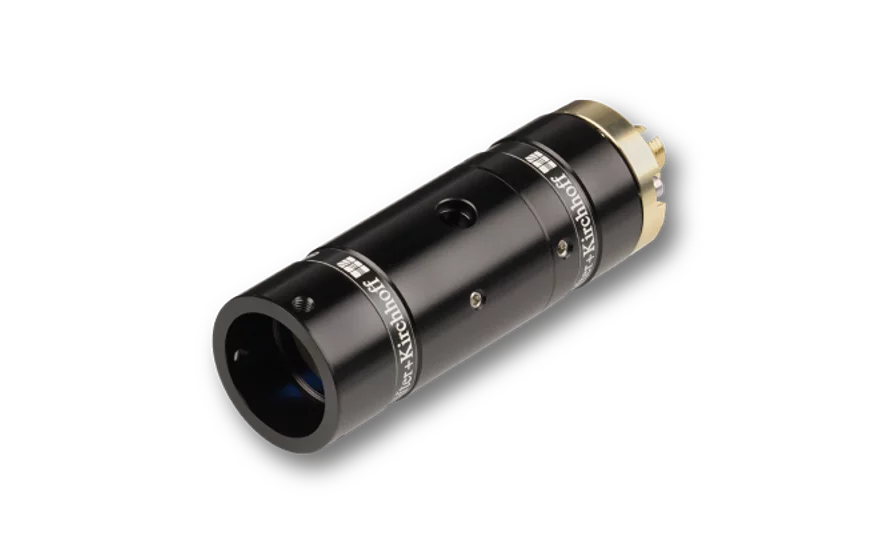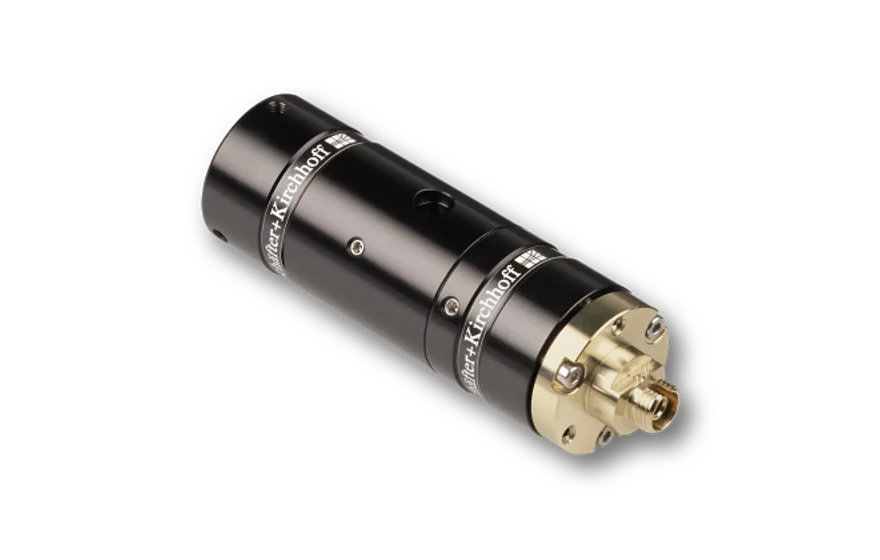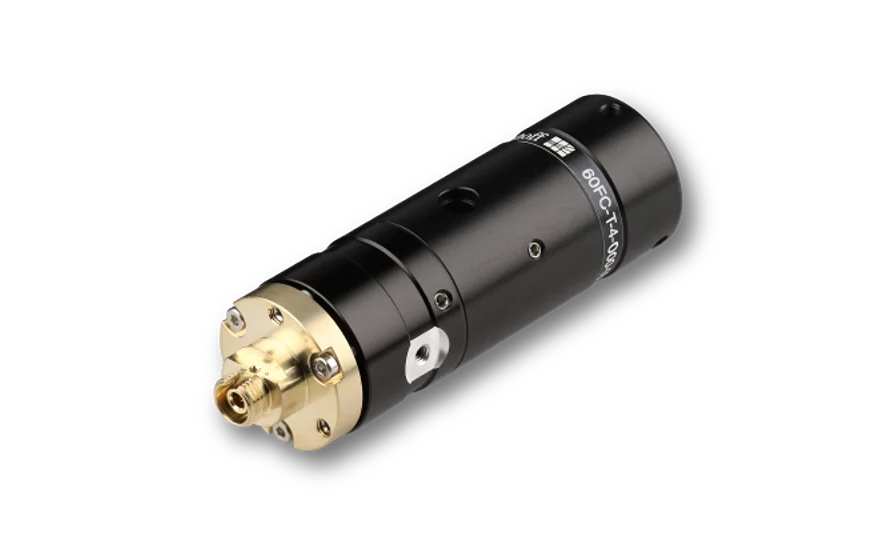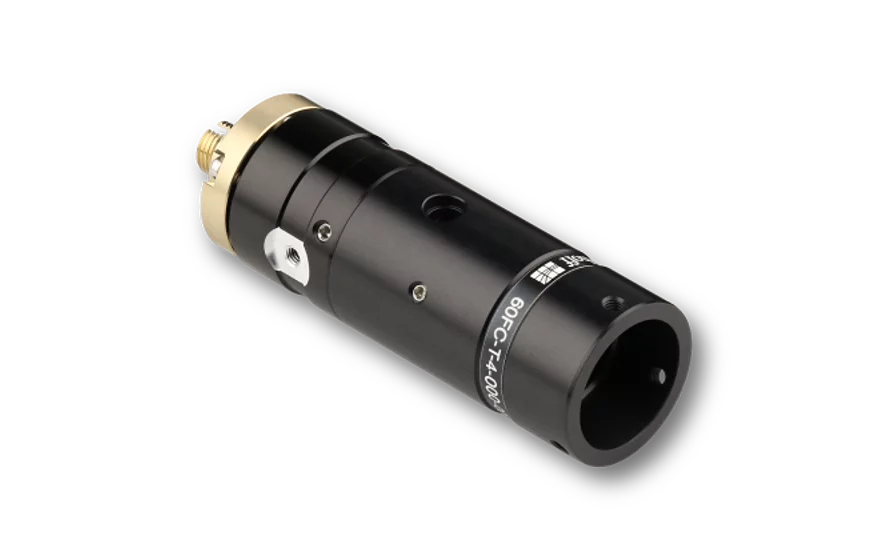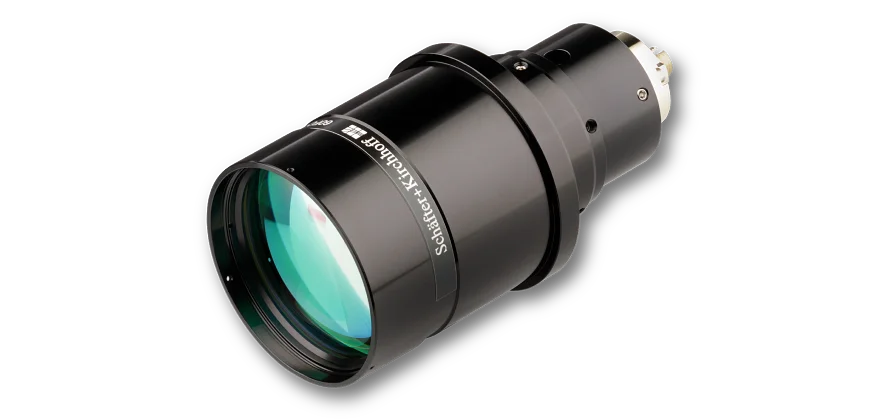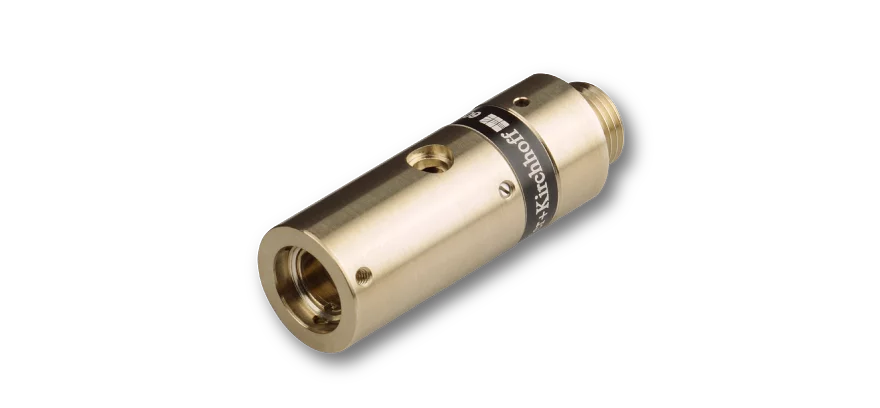These fiber collimators are a specially modified version of the series 60FC-T fiber collimators. They additionally have a radially arranged bore hole with M3 thread for purging (flushing) purposes.
The possibility of purging these fiber collimators makes them suitable for UV applications. (Reference: Marciniak et al., arXiv:1704.05879)
Optics for the UV
Unlike the standard series 60FC fiber collimators this series is offered with fused silica lenses which are suitable for wavelengths starting from 250 nm. Since these are plano convex lenses, they are diffraction-limited for fibers with an NAe2 < 0.04 only. All lenses are AR-coated.
Adjustment of focus and TILT
Such as with the standard series 60FC-T fiber collimators, the distance between fiber end-face and collimating optics is adjusted by means of an eccentric key. The lens does not rotate when adjusting the focus. The final focus setting is locked by means of two radially arranged clamping screws. Additionally attachment optics can be mounted to the front of the collimator. Additionally, the collimator has an integrated TILT adjustment for aligning the beam axis to the mechanical axis. This prevents vignetting of the collimated beam as well as diffraction arising from the clipped beam.
Optimum lens performance
The angled polish of connectors of type APC is considered by a pre-angled mechanical coupling axis that compensates the beam deflection and you can use the lens centrically. This minimizes aberrations simply resulting from a non-ideal beam path through the lens.
Connector Type
The fiber collimator can be equipped with FC PC or FC APC receptacles. the fiber receptacle has an additional grub screw to increase pointing stability.
Material
The fiber collimators are made of nickel silver and black anodized aluminum.
Mounting
All Fiber Collimators 60FC-T with diameter Ø25 mm can be placed in a standard mirror mount. 60FC-T with a larger diameter posses a flange for low-strain mounting e.g. using the clamp collars series CC.
